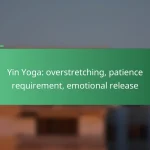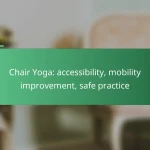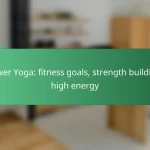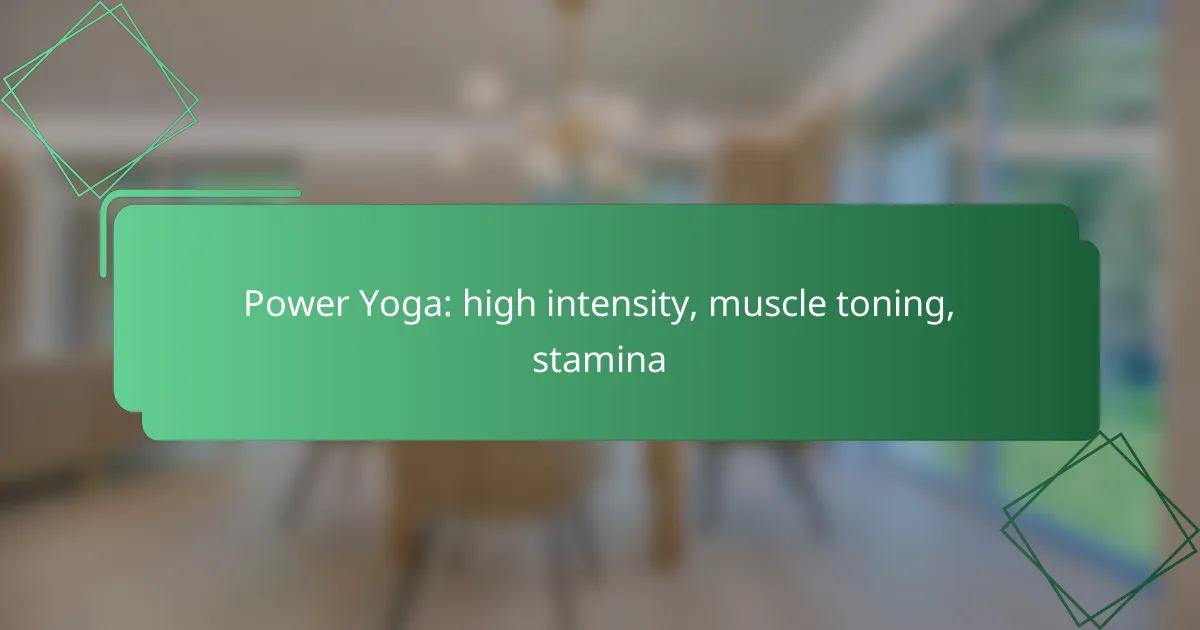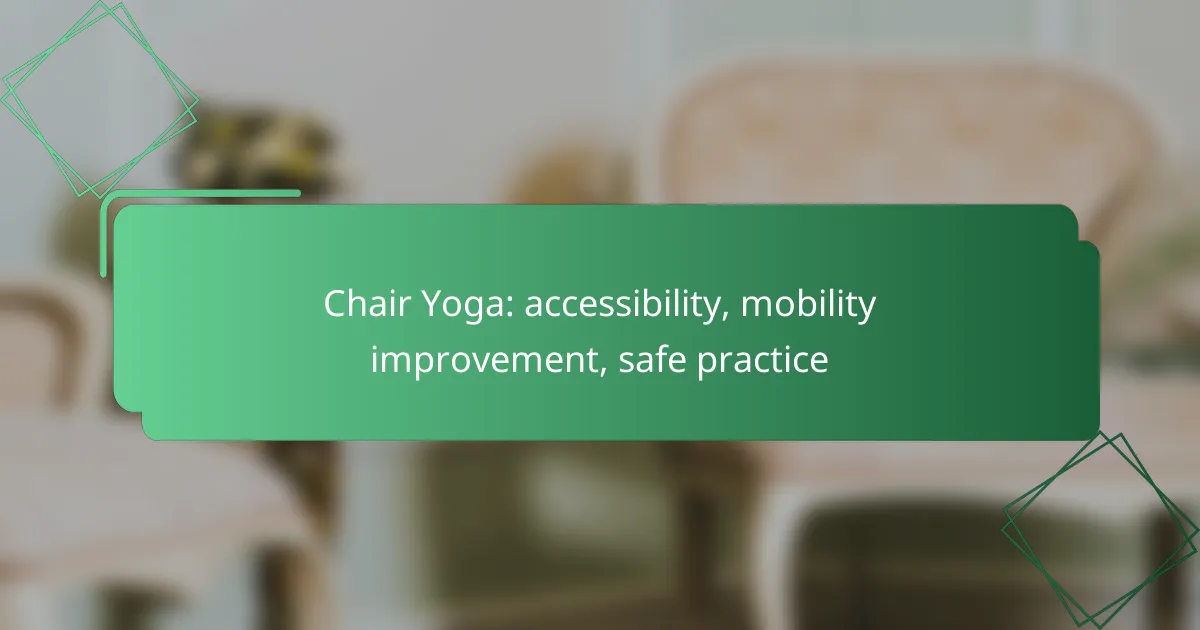Power Yoga is a dynamic and vigorous form of yoga that emphasizes high-intensity movements to build strength, muscle tone, and stamina. By integrating traditional poses with challenging sequences, it effectively enhances overall fitness and endurance, making it an ideal choice for those seeking a more athletic practice. Regular participation can lead to improved performance in daily activities and sports alike.
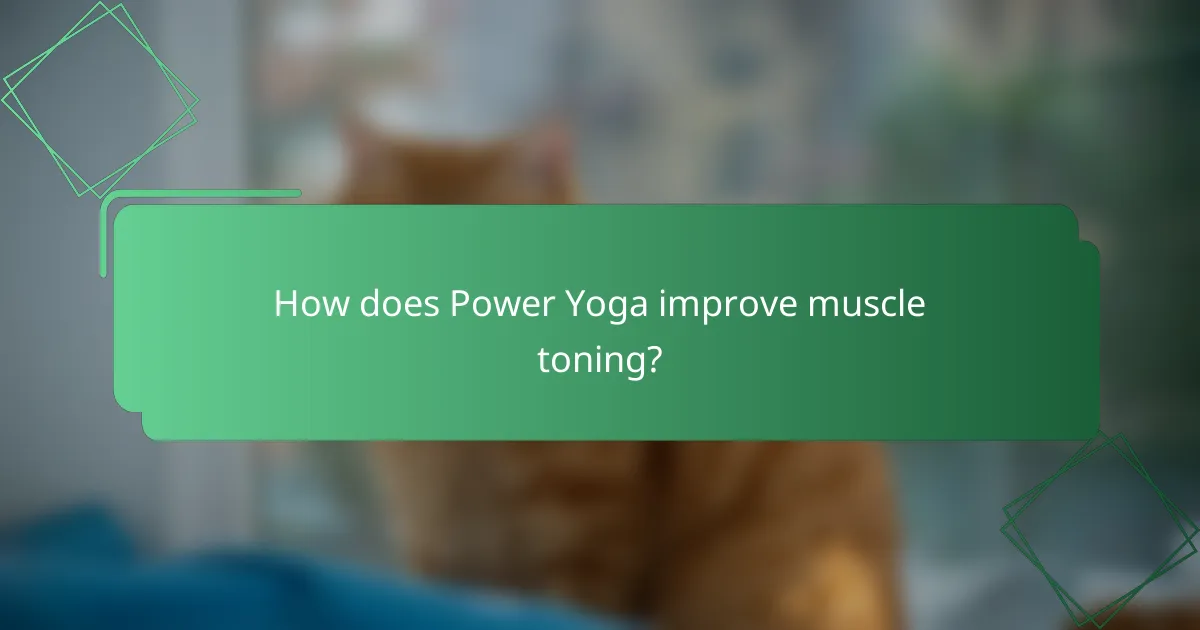
How does Power Yoga improve muscle toning?
Power Yoga enhances muscle toning by incorporating dynamic movements that engage various muscle groups, promoting strength and endurance. This practice combines traditional yoga poses with high-intensity sequences, effectively building lean muscle mass while improving overall fitness.
Increased muscle engagement
Power Yoga requires participants to hold poses and transition between them with control, which increases muscle engagement throughout the body. This constant activation helps to build muscle strength and endurance, leading to improved toning over time. Practicing regularly can lead to noticeable changes in muscle definition and overall physique.
Enhanced strength training
Incorporating elements of strength training, Power Yoga challenges muscles in unique ways compared to traditional workouts. Poses like Plank, Warrior, and Chair require significant effort, promoting muscle growth and stamina. This approach not only tones muscles but also improves functional strength, which is beneficial for daily activities.
Targeted muscle groups
Power Yoga allows for targeted muscle engagement, focusing on specific areas such as the core, arms, and legs. For instance, poses like Downward Dog and Chaturanga emphasize upper body strength, while lunges and squats target the lower body. By varying the routine, practitioners can ensure balanced muscle toning across all major muscle groups.

What are the benefits of Power Yoga for stamina?
Power Yoga significantly enhances stamina by combining strength-building poses with dynamic movements, which elevate heart rates and improve overall endurance. Regular practice can lead to better performance in both daily activities and athletic pursuits.
Improved cardiovascular endurance
Power Yoga promotes cardiovascular endurance by engaging large muscle groups in continuous movement. As practitioners flow through sequences, their heart rates increase, leading to improved circulation and lung capacity over time. This can translate to enhanced performance in other physical activities, such as running or cycling.
To maximize cardiovascular benefits, aim for sessions lasting at least 45 minutes, focusing on maintaining a steady pace. Incorporating poses like Sun Salutations can keep the heart rate elevated throughout the practice.
Increased energy levels
Regular Power Yoga practice can lead to higher energy levels by improving oxygen flow and reducing fatigue. The combination of physical exertion and mindful breathing helps clear mental fog, making practitioners feel more alert and invigorated.
To boost energy, consider practicing Power Yoga in the morning or during midday breaks. Staying hydrated and fueling your body with nutritious foods can further enhance the energizing effects of your sessions.
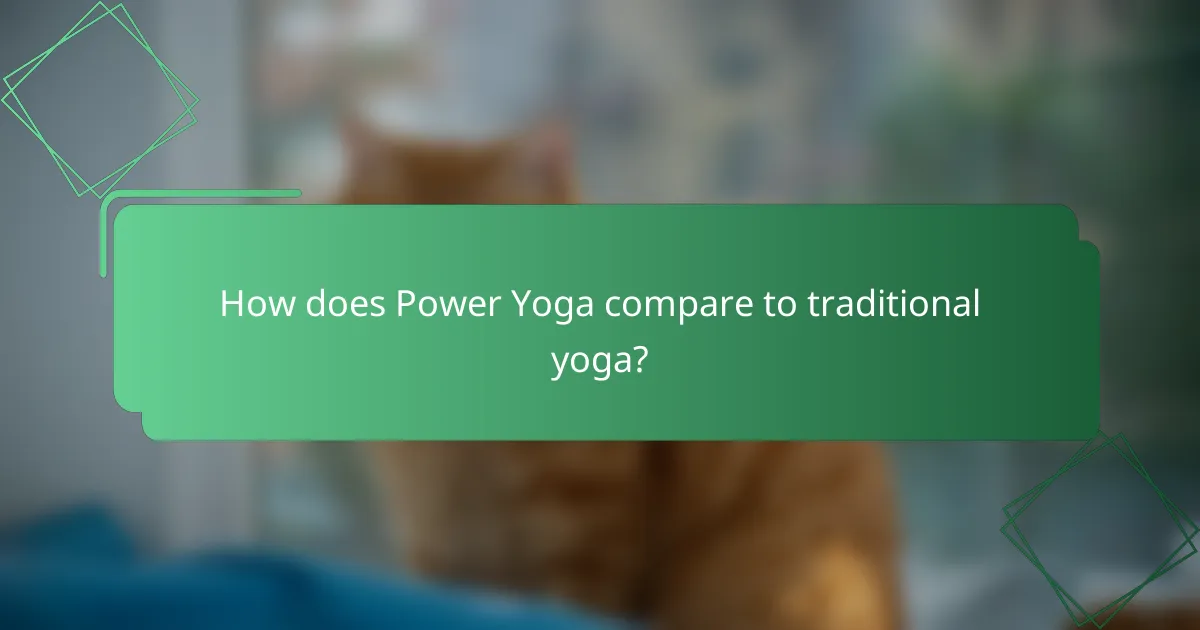
How does Power Yoga compare to traditional yoga?
Power Yoga is a more vigorous and fitness-oriented approach compared to traditional yoga, which often emphasizes relaxation and meditation. While both forms share foundational poses, Power Yoga focuses on building strength, endurance, and flexibility through dynamic movements and sequences.
Higher intensity workouts
Power Yoga sessions typically involve faster-paced sequences that elevate heart rates and promote calorie burning. This intensity can lead to improved cardiovascular fitness and muscle toning, making it a popular choice for those seeking a workout that combines yoga principles with aerobic exercise.
Classes often include a variety of challenging poses performed in succession, such as Sun Salutations and Warrior sequences. Practitioners can expect to engage in workouts that last anywhere from 45 minutes to over an hour, depending on the class structure.
Focus on strength and flexibility
Power Yoga places a strong emphasis on building muscle strength while enhancing flexibility. Poses are held for longer durations and often include variations that challenge the body, leading to improved muscle tone and joint mobility.
Common poses like Plank, Chaturanga, and various balance poses not only strengthen the core but also improve overall body alignment. Regular practice can lead to noticeable gains in both strength and flexibility, making it suitable for individuals looking to enhance their physical fitness through yoga.

What equipment is needed for Power Yoga?
Power Yoga requires minimal equipment, primarily focusing on a yoga mat, yoga blocks, and resistance bands. These tools enhance stability, support, and strength during high-intensity workouts.
Yoga mat
A quality yoga mat is essential for Power Yoga as it provides grip and cushioning. Look for mats that are at least 4-6 mm thick to ensure comfort during various poses.
Consider materials like natural rubber or PVC for durability and slip resistance. A good mat will help you maintain balance and prevent injuries during intense sessions.
Yoga blocks
Yoga blocks are useful for modifying poses and improving alignment in Power Yoga. They can help you reach the ground in challenging poses or provide support in balancing postures.
Choose blocks made from foam or cork, which are lightweight yet sturdy. Having a pair of blocks on hand allows for a more accessible practice, especially for beginners or those working on flexibility.
Resistance bands
Resistance bands add an extra layer of intensity to Power Yoga by enhancing strength training. They can be used to increase resistance during movements, helping to tone muscles effectively.
Select bands of varying resistance levels to match your strength and fitness goals. Incorporating bands into your routine can help build stamina and improve overall muscle tone.

What are the best Power Yoga classes in Los Angeles?
Los Angeles offers a variety of Power Yoga classes that cater to different skill levels and preferences. Some of the top studios include CorePower Yoga, YogaWorks, and YAS Fitness, each providing unique approaches to high-intensity workouts that enhance muscle toning and stamina.
CorePower Yoga
CorePower Yoga is known for its dynamic classes that blend strength training with traditional yoga. They offer a range of sessions, from beginner to advanced, focusing on building endurance and flexibility. Classes typically last between 60 to 90 minutes and are designed to challenge both the body and mind.
Consider trying their signature class, C2, which combines power yoga with a focus on breath and movement. This class is suitable for all levels and emphasizes core strength, making it a great option for those looking to tone muscles while improving stamina.
YogaWorks
YogaWorks provides a comprehensive approach to Power Yoga, featuring classes that emphasize alignment and technique. Their offerings include a variety of formats, such as heated and non-heated sessions, catering to different preferences and fitness levels. Classes usually range from 60 to 75 minutes.
Look for their Power Yoga classes, which are designed to build strength and stamina through a series of challenging poses. Instructors often provide modifications, making it accessible for beginners while still offering intensity for experienced practitioners.
YAS Fitness
YAS Fitness combines Power Yoga with high-intensity interval training (HIIT), creating a unique workout experience. Their classes typically last about 60 minutes and focus on enhancing cardiovascular fitness alongside muscle toning. This hybrid approach attracts those looking for a more varied workout routine.
Participating in their signature YAS class can help improve overall fitness levels while keeping the sessions engaging. The combination of yoga and HIIT allows for a full-body workout, promoting both strength and endurance in a supportive environment.

What prerequisites should I consider before starting Power Yoga?
Before starting Power Yoga, it’s essential to have a basic understanding of yoga principles and some level of physical fitness. This practice is intense and requires both strength and stamina, making prior experience beneficial for maximizing benefits and minimizing injury risk.
Basic yoga experience
Having a foundation in basic yoga is crucial for Power Yoga. Familiarity with fundamental poses, breathing techniques, and alignment will help you transition smoothly into more challenging sequences. If you’re new to yoga, consider starting with beginner classes to build your confidence and skills.
Power Yoga often incorporates dynamic movements and transitions that can be physically demanding. Without a basic understanding of yoga, you may struggle with form and technique, which can lead to injuries. Aim to practice foundational styles like Hatha or Vinyasa for several weeks before diving into Power Yoga.
Consider attending a few beginner classes or following online tutorials that emphasize foundational poses. This preparation will not only enhance your experience but also increase your enjoyment and effectiveness in Power Yoga sessions.


